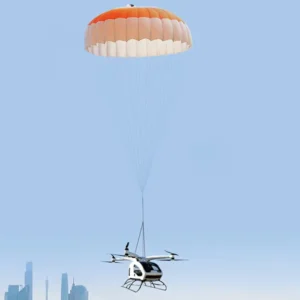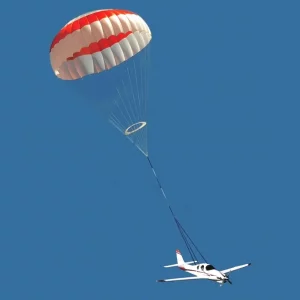At SkyEagle, we specialize in developing high-quality, advanced parachute systems designed to ensure safe emergency landings for a variety of aircraft. Our Ballistic Recovery Systems (BRS) are engineered to provide rapid deployment of parachutes in critical situations such as engine failure, loss of control, icing, or fuel exhaustion, dramatically increasing the chances of survival and minimizing the risk of injury.
We offer a range of solutions, including the T181 Aircraft Parachute Recovery System (APRS), which helps slow the descent of aircraft during emergencies, ensuring a safe landing in the event of malfunction or loss of control. For electric vertical take-off and landing (eVTOL) aircraft and low-altitude multi-rotors, the T191 Emergency Parachute offers a reliable system to protect both crew and equipment during power failures or system malfunctions. Additionally, our T200 Industrial Drone Rescue Parachute is tailored for UAVs weighing between 25 KG and 150 KG, equipped with a high-precision sensor that continuously monitors flight conditions to ensure immediate recovery when needed. These systems reflect SkyEagle’s decades of expertise and commitment to developing parachutes that meet the diverse safety needs of modern aviation and unmanned aerial vehicles.





